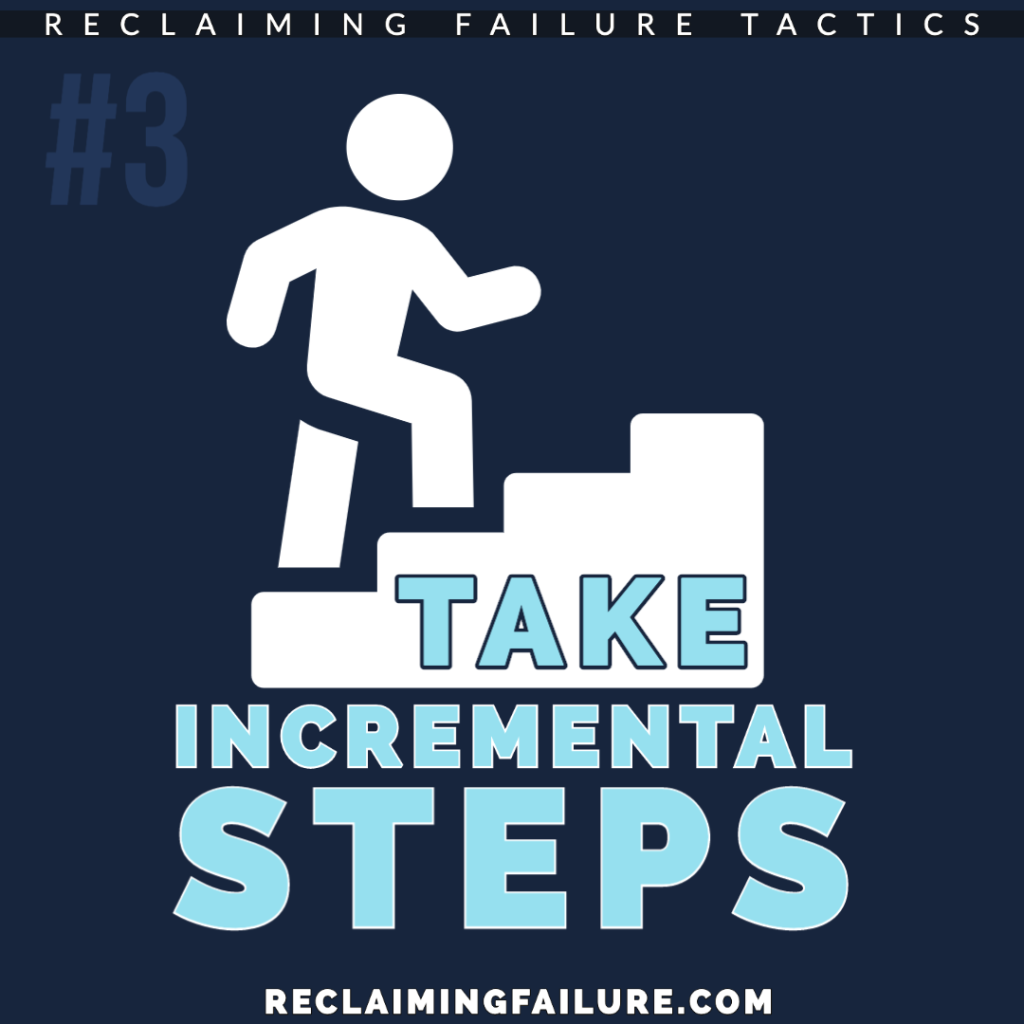
Contact Me
Most Recent Blog Posts
05/16/2024
ChatGPT and the Educational Pump Fake
05/25/2023
On Failure...
05/16/2023
An Ode to the GOAT (of Failure)
02/12/2021
Failure Judo: Take Time to Recover
07/31/2020
Failure Judo: Build Community
07/30/2020
Failure Judo: Discuss
07/29/2020
Failure Judo: Be Meta
07/28/2020
Failure Judo: Tinker
07/27/2020
Failure Judo: Practice
07/26/2020
Failure Judo: Reframe the Experience
07/25/2020
Failure Judo: Manage Loss
07/24/2020
Failure Judo: Take Incremental Steps
07/23/2020
Failure Judo: Fail on Furpose
07/22/2020
Failure Judo: Visualize Failure
07/21/2020
Failure Judo: 11 Tools to Make Failure Work for You.
07/20/2020
Perseverance Isn’t Enough.
02/05/2020
Why You Should Try New Things
01/09/2020
Piaget and Failure…
01/04/2020
The Value of Struggle
01/02/2020
The Fear of Failure
11/16/2019
Why Failure Beats Practice Alone
11/14/2019
Reclaiming Failure Tactic: Visualization
11/05/2019
Legos, the Process, and Failure
10/30/2019
Fail First, Succeed Later
10/25/2019
Failure... Like Riding a Bike
10/24/2019
Michael Jordan: Faiure
10/23/2019
Pole Vaulting - A Journey of Failure
10/18/2019
Failure Judo: Take Incremental Steps
07/23/2020
Part 3 of the Failure Judo Series.
I think it’s pretty normal, when we think about growth in areas that are important to us, to envision bold, big moves. Sometimes, it’s this image we have of ourselves succeeding in big ways that works against us making changes and moving forward. The very idea of making big changes, of taking huge risks and failing in that context can prevent us from even trying.
Do we really need to make big moves to grow and progress? I think the answer is “no”. In fact, I think making big moves, in many cases, isn’t even the most effective way to make progress. Take this video by skateboarder Isamu Yamamoto, for example.
Clearly, the tricks and movements he makes took years to master. Nobody who watches this routine would believe that the routine was created as a single unit, in its entirety. Likely, Mr. Yamamoto learned each trick and movement as a singular unit, and created this routine by stringing them all together. While the things we want to accomplish aren’t always so easily broken down into component parts, with a little thought and planning, we can usually find some ways to “baby step” toward our goals.
The advantage of this, of course, is that if or when we fail, we (1) fail in smaller ways, with (hopefully) smaller drawbacks/consequences, and (2) by focusing on small parts, we can direct our energy to mastering more specific aspects of the problem – just like Mr. Yamamoto.
There are two different approaches to breaking things down into smaller steps or incremental risks. The first, I’ll call segmentation. In this approach, we might break down different elements of the challenge and then once mastered independently, we reassemble them into a whole which is much more attainable. An example of this might be an obstacle course. If we take the time to practice and learn each obstacle on its own, we have the opportunity to focus our effort and attention on the needs of each one. Once mastered, we will be more ready to tackle the whole thing.
The second approach to incremental risk could be called iteration or progression. This is more appropriately used when the pieces of a bigger goal are better or even required to be completed in order, starting at the beginning. The key to using this strategy is our ability to fail at any point in the progression, and still return to the beginning to start again. In many cases, this is achieved by lowering the stakes for failure (see Failure Judo: Practice later in this series). As example of this might be the learning and performance of a piece of music. While you can rehearse segments of music, there is some value to the continuity and context of an earlier part in learning a later part. However, to lower the stakes of failure, we might rehearse the piece without any kind of audience, so we can fail without consequence. More on managing risk tomorrow in Failure Judo: Manage Risk.
Part 3 of the Failure Judo Series.